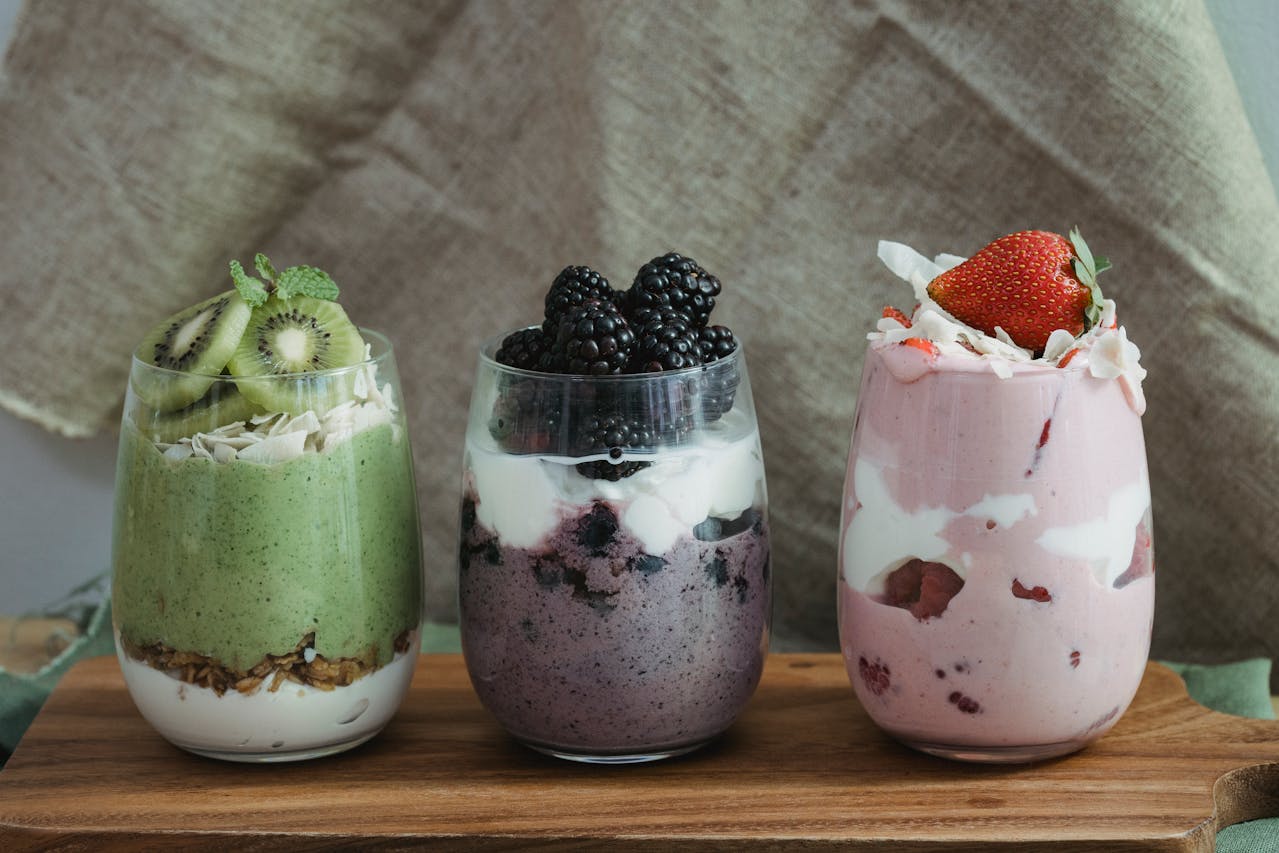Write Us: hello@ali5.org
You Won’t Believe How Much Sugar Is Hiding in “Healthy” Smoothies
Think your smoothie is healthy? Think again. Discover how much sugar is really hiding in popular smoothies and learn how to make smarter, balanced choices.

Smoothies: The Sweet Trap That Looks Healthy
Smoothies frequently appear like the best drink for your health since they are bright, refreshing, and full of nutrients. It looks like a reasonable and straightforward decision for anyone who wants to eat clean. Add some fruits, some almond milk, and maybe a scoop of protein, and you’re good to go.
But appearances can be misleading. Some smoothies aren’t as good for you as they look. Even when the label reads “no added sugar,” many smoothies you buy at the supermarket or a cafe include a lot more sugar than you may think. Fruit juices, sweeteners, and flavored additives can all add hidden sugars to what appears like a healthy, invigorating lunch.
Why do smoothies have so much sugar?
The things that go into a smoothie can sound healthy, but certain combinations wind up being high in sugar and not very nutritious. This is what usually goes wrong:
A Lot of Sweet Fruits
Mangoes, grapes, bananas, and pineapples all have a lot of sugar in them. When you mix two or three of them, your smoothie might taste more like a dessert than a nutritious snack.
Juice as the Base
It may seem nutritious, but even 100% fruit juice isn’t. Because juice doesn’t have any fiber, it’s readily absorbed and raises blood sugar levels. Juice is the main ingredient in a lot of packaged smoothies, and it works a lot like soda in the body.
Add-ins with flavor
Some protein powders with sweeteners, flavored yogurt, sweetened nut milk, and even some nut butters have extra sugar in them. These additions may seem good for you, but they slowly raise the amount of sugar in the food.
What Happens After You Drink a Smoothie with Sugar
Your body reacts the same way whether the sugar comes from fruit or a package. Blood sugar increases swiftly and falls just as quickly without fiber, fat, or protein to slow it down. You might feel:
- Wanting to eat again shortly after feeling tired or cranky, wanting more sweets quickly
If you drink a lot of high-sugar smoothies over time, you may end up with:
- Fat builds up around the abdomen
- Insulin resistance or a higher risk of diabetes
- Hormone and hunger signals are messed up
- Breakouts and indications of age that start early
- Mood swings and energy fluctuations
Words That Can Be Confusing
A lot of smoothie labels include words that seem healthy, including “immune-boosting,” “clean,” or “no added sugar.” But these words don’t always signify that the smoothie is minimal in sugar or balanced. A drink can have no added sugar but yet include 40 to 50 grams of natural sugar from fruit and juice. That’s more than most people need in a whole day.
How to Know If a Smoothie Is Too Sweet
When you buy anything from a café, you might not always be able to see the sugar amount on the label. Look for these indications instead:
- Juice is the initial component, not the entire fruit
- It has flavored milk, yogurt, or protein powder in it
- There are ingredients like honey, syrup, or agave on the list.
- The label is more about jargon than nutritional balance.
- You get hungry or sleepy an hour after drinking it.
If you want a snack shortly after completing a smoothie, it generally isn’t full or balanced enough.
A Better Way to Make a Smoothie That Is Good for You
You don’t have to quit having smoothies. You just have to make them with a plan.
- Use One Fruit: Choose a low-sugar fruit, like berries or a green apple. These provide you with antioxidants without making your blood sugar levels go up.
- Add Some Vegetables: You may simply mix in spinach, kale, cucumber, and cauliflower. They contribute fiber, nutrients, and bulk without changing the taste too much.
- Pick the Right Liquid: Use basic almond milk, coconut water, or water without seasoning. Don’t drink any fruit juices.
- Add fats and proteins: Chia seeds, flaxseeds, plain Greek yogurt, and nut butter without sugar keep you full longer and provide you with constant energy.
- Act Like It’s a Meal: If it includes carbohydrates, healthy fats, and protein, a well-made smoothie may constitute a meal. It might not keep you going if it doesn’t have one of them.
- Don’t juice; always blend: Blending keeps the fiber that helps control blood sugar. Juicing takes off that fiber and gives you sugar too rapidly.
Last Thoughts
Smoothies may be a quick and tasty way to feed your body, but only if you make them the proper way. Don’t be fooled by bright packaging or claims about health. Some smoothies may be bad for you if they include too much sugar and not enough balance.
The good news is that this is easy to repair. Pick whole ingredients, stay away from additions that are too sugary, and focus on making a smoothie that gives you energy and keeps it consistent. If you do it properly, your smoothie will taste good as well as look good. It will be good for you.







